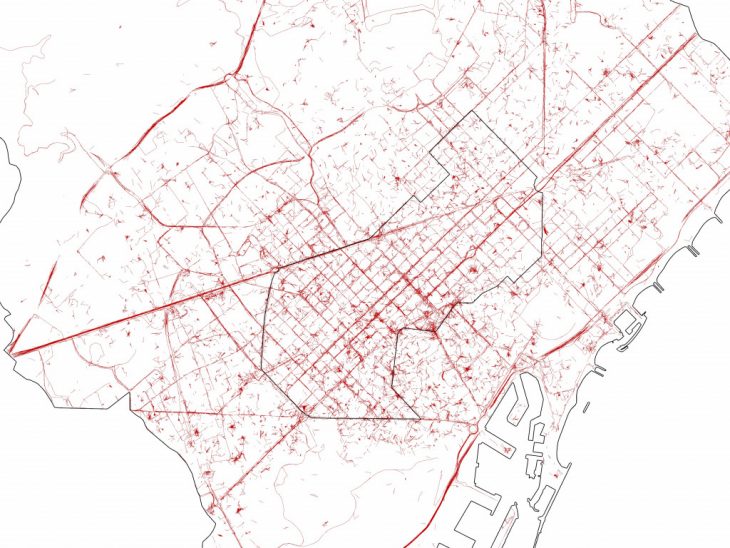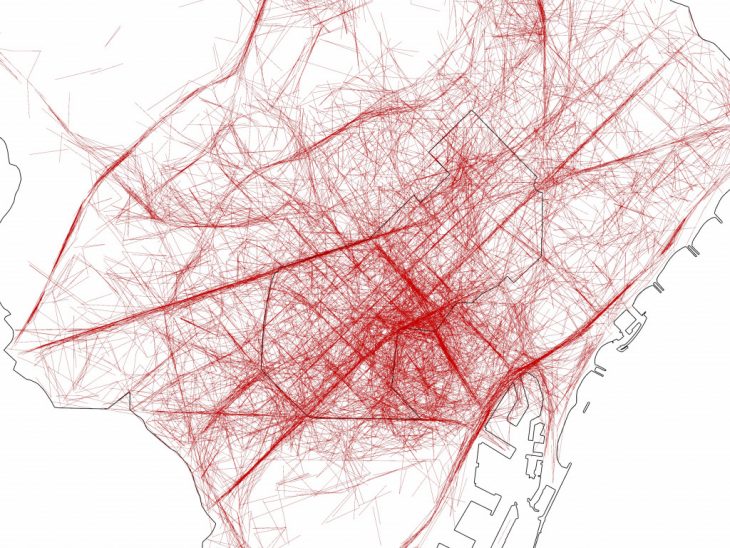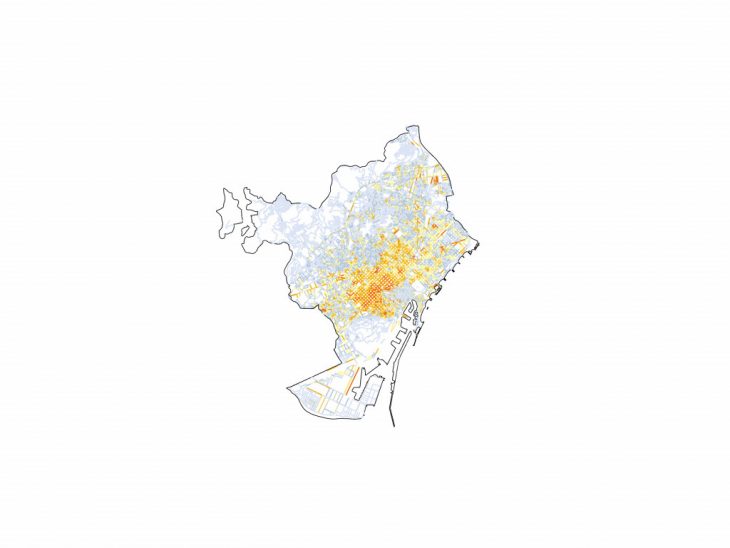Abstract
This project uses python tools for analyzing the mobility patterns of Barcelona. Tools like geo-pandas, kepler and moving-pandas help the project to visualize and animate the data set, provided by our Internet of People studio. This methodology is developed in relation to the studio project and the challenge of Mobility-as-a-Service. These analyses help in proposing a policy for mobility in Barcelona through the years 2025-2033.
Introduction
The data set used on this project is the Footfall dataset for Spain. It consists of geolocated unique IDs, via WIFI or Mobile internet for 7 days between November 18th to 24th, 2019. This guides the project to identify the mobility of people within the city of Barcelona, and understand their movement pattern specific to the Eixample district.
The project is divided into four schematic chapters to analyze –
Chapter 0: Cleaning the dataset
Chapter 1: Identifying the movement
Chapter 2: Identifying the stops
Chapter 3: Conclusions
Chapter 0: Cleaning the data
This dataset demanded a set of cleaning processes, to have better conclusions and avoid certain irregularities in the tracking points, and time. The initial set of cleaning was based on three elements: (1) Time, (2)Unique IDs and (3) the Coordinate points. Furthering with this clean dataset, we performed different processes of filtration for specific analysis purposes.
Chapter 1: Identifying movement
In order to identify the movement, we had to eliminate the IDs from the cleaned dataset the IDs that have the same coordinates for different periods of time (registered timestamp).
Afterwards, this data frame is furtherly filtered, to eliminate the IDs with less than 10 entries. These rows of IDs just appear for a short period of timestamp difference and do not provide enough conclusions based on the whole time period.
To identify the busy hours, the data frame was modified to count the number of unique IDs within a specific timestamp, which helped in determining the busy street locations.
Chapter 2: Identifying the stops
To investigate further, the analysis was shifted to identify the stop locations. The initial data frame is restructured to sort the IDs, based on unique location for a given difference in the timestamp. These geo-located points help in concluding the concentration of different functions based on the period of time spent. The filtered csv data frame was clipped on the Barcelona boundary. Then, visualized with geo-pandas and animating the points on the map.
2h-3h staying in the same location which can identify the movements more likely to be for leisure
3h-6h staying in the same location which can identify the movements more likely to be for education, and
6h-9h staying in the same location which can identify the movements more likely to be for work
Kepler animation
Moreover, Kepler is known as a tool for mobility data visualization. In order to better understand and visualize the movement of people, the project focused on creating the feature collection geojson file to use in Kepler platform. Here, the date frame is filtered based on the IDs having consistent entries of the geolocation for a longer period of time in a particular day.
Also, the filtered data was clipped on the Barcelona boundary, to focus the study only within the city.
Chapter 3: Next steps and conclusions
Moving pandas
Furthermore, moving-pandas is a recent tool developed for python to analyze the mobility data. This project experimented with SKmob library to filter noise detection on the data, clustering the data since the GPS tracking is not consistent based on the timestamp and stop detection. This methodology was just an experiment for this analysis process to have a different dimension to our conclusions, even without any evident outputs or results. This experiment will continue to develop further investigation on the code.
Finally, with these analysis methods from python animation and visualization, the studio project is well informed on designing the strategies for the policy and proposal map generation.

Short Distance travels in Barcelona

Long Distance travels in Barcelona

Heatmap of the accessibility to amenities
Tracing Movement is a project of IAAC, Institute of Advanced Architecture of Catalonia developed at Master in City and Technology in 2020/21 by students: Diana Roussi, Laura Guimaraes, Matteo Murat, Sridhar Subramani and Stephania-Maria Kousoula, and faculty: Diego Pajarito